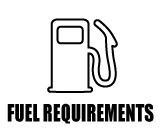Supported Vehicles:
- Volkswagen MK7.5 GTI (MT & DSG)
- VLK_CXCA_5G0906259Q
Map Revision:
- Anti-Theft Mode v105
- Stage0 v105
- Valet Mode v105
- Stage1 91 v105
- Stage1 93 v105
- Stage2 91 v105
- Stage2 93 v105
- Stage3 91 v105
- Stage3 93 v105
Map Availability:
- Download from the COBB Tuning Volkswagen GTI OTS Map Database.
Required Accessport Firmware:
COBB Custom ECU Features
- COBB Custom Features: Burnout Mode on MK7 Vehicles
- COBB Custom Features: How to Use Flat Foot Shift on MK7 Vehicles
- COBB Custom Features: Launch Control on MK7 Vehicles
- COBB Custom Features: COBB Traction Control on MK7 Vehicles
Stage 1 91
Stage 1 93
Stage 2 91
Stage 2 93
Stage 3 91
Stage 3 93
*Peak gains are measured as the difference between the highest points of the two plots.
*Largest gains are measured as the largest gain at any single point between the two plots.
Results may vary. Power as tested on 2019 GTI DSG using these identical calibrations. Generally speaking, the 91 octane calibration has a richer fuel curve and a less aggressive ignition advance map to help compensate for 91 octane fuel and/or less than ideal atmospheric conditions. The map designed for 93 octane is the most aggressive.
Map Version Notes:
Non Performance Maps
Anti-Theft Mode
- Will not allow vehicle to start
Valet
- Fuel Requirements:
- 91 octane or better
- Intake Requirements: Stock airbox and stock air filter
- Exhaust Requirements: Stock exhaust
- Boost Targets: Mechanical minimum
- Rev Limiter: 3000RPM
*Not intended for aggressive driving*
High Altitude:
A quick note for those of you that live at higher altitudes: it is common for turbocharged cars at higher altitudes to run less boost pressure due to lower air pressure and air density. Your turbocharger has to work harder to compress a less dense air mass compared to the same turbocharger at sea level. This must be factored in when determining if your turbocharger is running the proper amount of boost pressure and not being pushed beyond its efficiency range.
Example: If you live in Denver at 5280 ft. and are trying to run a peak boost pressure of 15 psi, your turbocharger has to work the equivalent of making ~17.5 psi at sea level.
There are barometric compensations within the factory ECU that lower boost targets as you climb in altitude in an effort to keep the turbocharger in its optimal range. The COBB performance maps utilize these compensations and therefore, it is perfectly normal for the final boost / load value to be lower than what is listed for your map.
Revision Notes:
v105 –
- No calibration changes.
- This map has been updated to our Green Speed standard to ensure compliance with EPA and CARB regulations. This map eliminates unnecessary DTC suppression to ensure full environmental compliance.
v104 –
- Stage3 91/93 OTS maps have been released with bug fixes for CCF.
v103 –
- Stage1 91/93 and Stage2 91/93 OTS maps have been revised for an over all improved driving experience.
- Adustments made to default CCF Traction control.
v102 –
- Revised map naming for parity.
- Enabled Cobb Custom Features: Traction Control.
v101 –
- Enabled Cobb Custom Features: Launch control and Flat Foot Shift. More details here - COBB Custom Features: Volkswagen MQB Platforms
- Flat Foot Shift RPM (Per Gear):
- Burn out mode Rev. Limit: 5000 RPM
- Launch Control Rev. Limit by speed/slot:
- Flat Foot Shift RPM (Per Gear):
v100 –
- Revised ignition timing, primary fueling and boost levels for performance and safety











